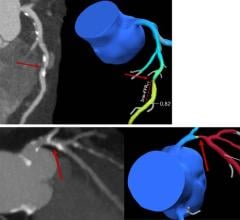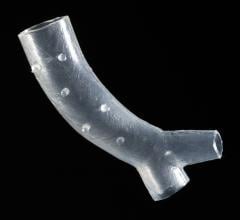
March 3, 2017 — Philips recently announced the global launch of Azurion, its next-generation image-guided therapy platform.
The Azurion image-guided therapy platform for interventional labs is the result of a multi-year development program conducted in close collaboration with leading clinicians in the field. The company said this next generation platform features a state-of-the-art ergonomic design with an easy-to-use intuitive user interface, enabling clinicians to swiftly and confidently perform a wide range of routine and complex procedures in the interventional lab.
With the rapid growth of image-guided therapy procedures, hospitals and health systems are increasingly faced with the need to control costs, while improving their standards of care. Philips said Azurion has been designed to address these challenges and is equipped with new workflow options and performance dashboards, as well as an upcoming range of productivity improvement services.
The Azurion platform also features over 1,000 new components, including an enhanced flat-panel detector, and Philips’ newly developed ConnectOS operating system for the seamless integration of real-time information from all relevant technologies in the interventional lab. All of these components work together to deliver high image quality at ultra-low X-ray dose and real-time image processing on multiple work spots within the interventional lab. Parallel working enables the team of clinicians to complete different tasks simultaneously in the interventional lab, saving valuable time without compromising quality of care. Azurion features procedure cards that allow clinicians to pre-program routine tasks and user preferences, helping to minimize preparation errors and further reducing preparation and procedure time.
Other Philips advanced interventional tools are integrated into the Azurion platform, including:
- VesselNavigator for vascular surgery;
- EchoNavigator for interventional cardiology;
- EmboGuide for inteventional oncology; and
- AneurysmFlow for interventional neuroradiology.
Driven by their benefits for patients and care providers, minimally-invasive therapies, such as the catheter-based treatment of certain tumors, aneurysms, obstructed blood vessels, heart rhythm disorders and defective heart valves, continue to grow fast. In addition to reduced patient trauma and shorter recovery times, such procedures also have the benefit of allowing the treatment of patients who would not be able to withstand the trauma of open surgery. However, during such procedures, clinicians cannot directly see and feel the organs they are working on. Effective imaging, measurement and navigation technologies are therefore key to guiding minimally-invasive procedures. At the heart of the interventional lab, these technologies allow identification and visualization of target organs and tissues, the operation of interventional devices, and the placement of implants, leading to improved chances of therapy success.
“For over 30 years, we’ve pioneered minimally-invasive treatments that help our patients get back to their daily lives,” said Barry T. Katzen, M.D., founder and chief medical executive of the Miami Cardiac & Vascular Institute, Baptist Health South Florida. “The imaging environment is critical to perform such procedures efficiently and effectively. As an interventionalist, we want to be in the cockpit, similar to a pilot in an airplane, where we have control of everything we need and have all the relevant functions at our fingertips. Philips’ next-generation image-guided therapy platform just takes it to a whole other level and allows interventionalists to accomplish the procedures quicker and more efficiently, which benefits the patient."
For more information: www.usa.phililps.com/healthcare


 May 17, 2024
May 17, 2024 







